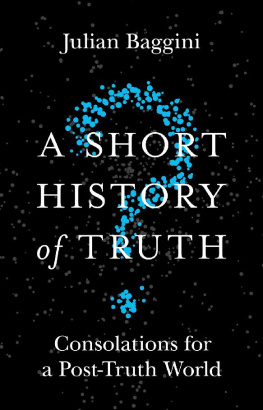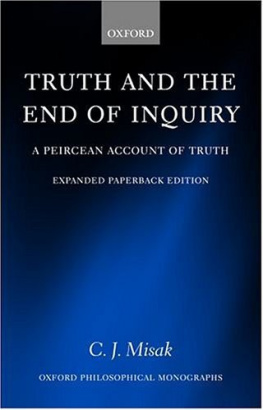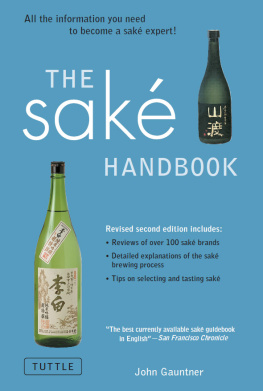
a beyond-the-basics guide to
UNDERSTANDING,
TASTING, SELECTION
& ENJOYMENT
John Gauntner
Stone Bridge Press Berkeley, California
Published by
Stone Bridge Press
P. O. Box 8208, Berkeley, CA 94707
Enjoy sake sensibly and responsibly!
Text 2014 John Gauntner.
Book design and layout by Linda Ronan.
All rights reserved.
No part of this book may be reproduced in any form without permission from the publisher.
Printed in the United States of America.
10 9 8 7 6 5 4 3 2 1 2018 2017 2016 2015 2014
This book is available in both print and digital editions:
p-ISBN: 978-1-61172-014-3
e-ISBN: 978-1-61172-551-3
To Providence, for its support, and to Mayu, for hers
CONTENTS
ACKNOWLEDGMENTS
As I look back over the past two decades of involvement with the sake world, one thing is glaringly obvious: I did not choose this sake path; it chose me. In fact, I do not even recall having ever made the concrete decision to make sake my job. I arrived in Japan in 1988 on a one year teaching program. A respected coworker introduced me to half a dozen good sake on New Years Day 1989, and from that point I was fascinated, and in love. But I never thought I would ever make sake my work. One chance meeting after another, one coincidence after another, led to a newspaper column, which led to a book, which led to the need to learn more, which led to involvement with the industry. And the circle continues.
Deciding where to begin expressing my gratitude is daunting. It is, after all, a circle. Let it start with Masao Anzai, who introduced me to the stuff. And let it continue with Rick Warm, Bryan Harrell, David Friedman, Mark Thompson, David Dow, Grif Frost, and Yishane Lee, who all played their part in getting me started in properly writing articles, books, websites, and the like.
Once I became involved in the sake industry, the list of those that helped further the cause just expanded exponentially. In particular, Yasutaka Daimon of Daimon Brewery, Yuichiro Tanaka and his late father Takejiro of Rihaku Brewery, and Kosuke Kuji of Nanbu Bijin Brewery immediately come to mind as three sake brewers who have encouraged, supported, and helped me in ways more than I can ever hope to repay. Every single one of the hundreds of sakagura I have visited over the last twenty years has truly inspired me, generously shared with me incredible information, and conveyed their passion for their craft and their product. Not one iota of it has been lost on me. There are, doubtlessly, countless others who have also been a part of this path.
Thanks as well to my friend Haruo Matsuzaki, who has taught me more about sake than anyone on the planet. And of course, very sincere gratitude goes to Philip Harper of Tamagawa Shuzo, who has taught me tons and exposed me to so much of the world of sake, both directly and indirectly. There is also Hitoshi Utsunomiya and everyone at the National Research Institute of Brewing to be thanked for technical information and skills I somehow managed to pick up along the way.
Next, appreciation goes out to Ed Lehrman, Nick Ramkowsky, and everyone else at Vine Connections, who provided me with opportunities to leave the confines of my sake-appreciation bubble and learn market realities, which has been invaluable. Mark Schumacher has helped me immensely with so much, including but not limited to getting the good word out in a good format to the thirsty masses in the U.S. Thanks as well to the more than one thousand people who have taken my professional course, as nothing makes us learn a subject more than teaching it.
Inanimate though it might be, thanks to sake itself for being so damn interesting and so damn tasty, and to Matsuo-sama, the Shinto god of sake, for watching over us all for so long.
And finally but most importantly to my wife, Mayuko, who has not only tolerated but has actually enthusiastically supported this silliness for so long.
John Gauntner
Kamakura, Japan
INTRODUCTION
This book comprises over two dozen chapters that go into a fair amount of depth about all things sake. Just about every topic is covered, revealing pros and cons, honest realities, and behind-the-scenes candor.
Perhaps, then, it is best to quickly cover some basic ground about sake in this introduction, which will make it easier to go through the rest of the chapters in any order you choose. So, here, let us run through the basics of sake, what it is and how it is made, and what terms and concepts you really need to know to enjoy it right away. Most of the topics covered lightly here are presented in much more detail in the main chapters.
What Is Sake?
In short, sake is an alcoholic beverage that is brewed from rice. While this may seem obvious, there are two important points revealed here.
One, in terms of fermentable materials, sake is made from rice only. No other grains or sugars are fermented in the sake-making process. While water, yeast, and a mold known as koji are used, no other fermentable materials are used.
Two, sake is a brewed beverage. It is not a simple fermentation like wine, nor is it a distilled beverage like whiskey. It is closer to a beer than anything else but is nonetheless unique.
Sakes alcohol content is about 1516 percent, which is only a bit higher than a robust red wine. This is watered down from the naturally occurring 20 percent or so simply for enjoyability, since the higher alcohol content overpowers subtle aromas and flavors.
Sake production is unique in many ways. Beer is made by converting starches in barley to sugar using enzymes that arise when the barley is maltedthat is, when it is moistened, warmed, and allowed to sprout. Sake, however, is made from white rice, which is rice that has had the brown outer partthe huskmilled away. This means that it cannot be malted the way barley is for making beer, but enzymes are still needed to chop the long starch molecules into smaller, bite-size sugar molecules. These sugar molecules can be gobbled up by the yeast cells, which then give off alcohol and carbon dioxide.
In sake brewing, these enzymes are provided courtesy of koji mold (its scientific name is Aspergillus oryzae). The spores of this mold are sprinkled on about 2025 percent of all the rice that goes into a batch of sake, and as this mold grows around and into the grains of steamed rice, it gives off the necessary enzymes, which then convert the starch in the rice into sugar.
In beer, the starch-to-sugar conversion and sugar-to-alcohol fermentation take place separately and sequentially. However, in sake brewing, the moldy rice trickles sugar into the mash in the same space and at the same time that the yeast cells convert said sugar into alcohol.
The process is referred to as multiple parallel fermentation and represents a difficult balance to strike. It yields the highest naturally occurring alcohol level of any non-distilled beverage on the planet: the aforementioned 20 percent.
The History and Process of Making Sake
How long has sake been around? The short answer is about a thousand years. It has been about that long since sake came to resemble what we enjoy today, in both production methods and in the nature of the completed product.
But in reality, sake has been around for about 1,700 years. Back then, someone left some steamed rice lying around, upon which naturally occurring koji mold and yeast fell. That led to an oatmeal-like, mash-like sake.
Premium ginjo sake, however, with all its refined complexity and aromatic style, has only been on the market as a viable product for about forty years. This is not to imply sake was a lesser beverage before
Next page










